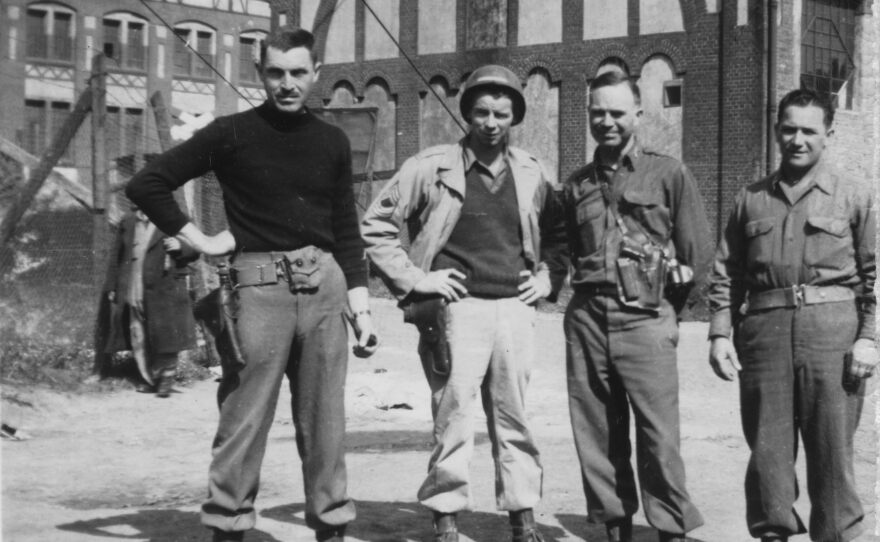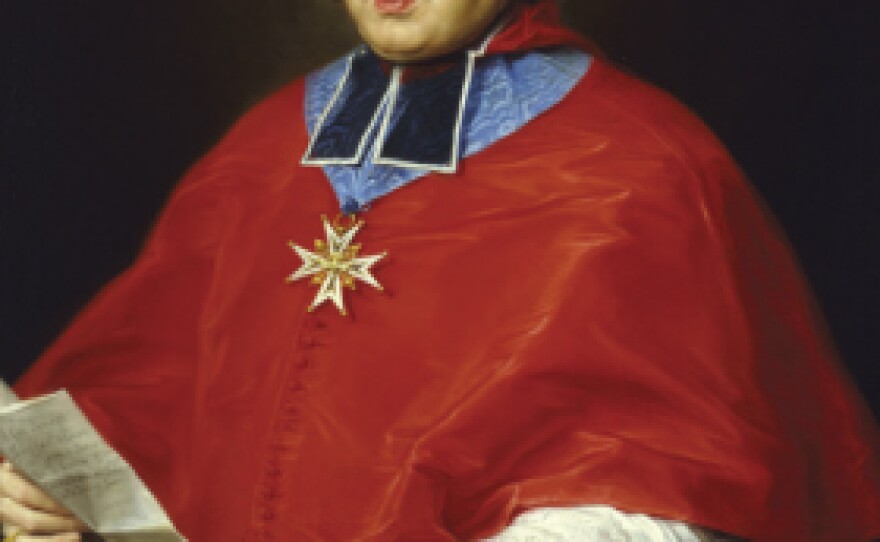If you like George Clooney and friends in the “Ocean's” films then you will enjoy “The Monuments Men” (opened February 7 throughout San Diego). But if you liked the documentary “The Rape of Europa,” then this Hollywood fluff will leave you annoyed.
Columbia Pictures is pitching its new film “The Monuments Men” as “the true story of the greatest treasure hunt in history, ‘The Monuments Men’ is an action drama focusing on seven over-the-hill, out-of-shape museum directors, artists, architects, curators, and art historians who went to the front lines of World War II to rescue the world’s artistic masterpieces from Nazi thieves and return them to their rightful owners.”

Now here’s the thing. The studio is not overselling the story. It is a true story, it is an amazing hunt for art treasures, it does have unlikely heroes, and it is a thrilling drama. But sadly not in the hands of actor/writer/director George Clooney. As a film, “The Monuments Men” plays like “Ocean's 11 Goes to War.” That means it is slickly produced, tries for a jaunty tone with more humor than drama, and is fueled by an artificial sense of tension generated by cross cutting rather than any actual story development.
The film, as with the “Ocean's” films, has a fun cast (especially enjoyable were Bill Murray and Bob Balaban) but this story is so rich with history and detail that it seems frivolous to bash it out as a light-hearted entertainment. Oh sure, Clooney tries to jerk a few tears from the audience with a pair of deaths, and a couple scenes (heavily punctuated with sentimental music) to remind us of what the Nazis did to the Jews, but these are a mere aside to his World War II edition of “Oceans 11.”

Perhaps I would feel less disappointed in the film if I had not seen the documentary “The Rape of Europa,” which took a more factual look at art, Hitler, and World War II. But even that documentary only scratched the surface of the work of the Monuments Men. The preview screening last week was introduced by art historians from the San Diego Museum of Art where two of the Monuments Men rescued paintings are currently on display. They were obviously thrilled to see men like themselves presented as Indiana Jones-like action heroes, and to see art presented as something valuable enough to risk one’s life for. The Museum had a table with brochures, which audience members seemed less likely to pick up before the film but eager after. The film, it seems, proved good advertisement for art and museums, and I will applaud it for at least doing that.
Since art and ownership of art is key to the story of “The Monuments Men’s” story, SDMA was quick to point out that the the two paintings, Madonna of the Roses and Cardinal Etienne-René Potier de Gesvres, in its permanent collection were legally obtained and the ownership not in dispute. This is important since Variety reported that Clooney took the opportunity at a Berlin press conference for the film (which screened at the Berlin Film Festival) to suggest that Britain return the Greek art treasures it possesses. So in a sense the story of the Monuments Men and the legacy of art stolen or lost during war continues.

Clooney is an immensely likable actor but he has yet to really impress as a director (“Good Night and Good Luck” and “Ides of March” being his best directing efforts and ones where he had a limited role as an actor). For “The Monuments Men” he co-writes a very plain, uninspired script (based on Robert Edsel's book) with Grant Heslov (whose unimpressive credits include “The Scorpion King” and “True Lies”). Then provides the most formulaic direction. This means a contrived race against the Russians to get art out of a salt mine at the end of the film, and a manipulative score by Alexandre Desplat that lets us know when the film is trying to be serious. Poor Cate Blanchett as a kind of Monuments Woman seems to be acting in a completely different film with her serious and affecting performance as an art lover trying to preserve not just the art but the rightful ownership of it as well. Clooney's shortcomings are made clear in a moment when his character -- looking at a particularly meaningful work of art -- is meant to register awe, sadness, elation, and triumph. In that moment, the sappy music tells us what to feel and Clooney the director doesn't know what to tell Clooney the actor to do. The result is a strained moment where I suddenly realized what a ridiculously good looking man Clooney is (even under the added gray) and how perfect that can be in some movies and how distracting it was here.
“The Monuments Men” (Rated PG-13 for some images of war violence and historical smoking—that’s the MPAA’s words not mine) provides a much-needed focus on a fascinating chapter in history and one that continues to resonate. If it can stir interest in this subject then maybe I can forgive it for being such a shallow and uninspired telling of a fascinating true story. Maybe.
You can find out more about the real Monuments Men and even help in their continued search for the "most wanted" missing art at their website.
Companion viewing: “The Rape of Europa,” “The Art of the Steal” (2009 documentary), “Stolen Art”
The Rescued Art At SDMA

Pseudo Pier Francesco Fiorentino. Madonna of the Roses, ca. 1485 0 90.
Stored by the Nazis in the Altaussee salt mine in Austria, that was used as a repository for art during WWII, this work was removed by the Allies to the Munich Art Collecting Point (run by the "Monuments Men"), and ultimately returned to the country of origin for restitution of the original owners or heirs. This painting had been looted from Vienna, Austria, and was returned to Austria after the war, and was finally restituted to the son of the original owners.

Pompeo Girolamo Batoni. Cardinal Etienne-René Potier de Gesvres. 1758.
Also removed by the Allies to the Munich Art Collecting Point, this painting was ultimately returned to its country of origin for restitution to the original owners or heirs. This work was not looted, but purchased on the open market by Adolf Hitler's agents for inclusion in the proposed Führer Museum in Linz, Austria. It was returned to France after the war and then sold by the French Government since there was no one else to claim it.







